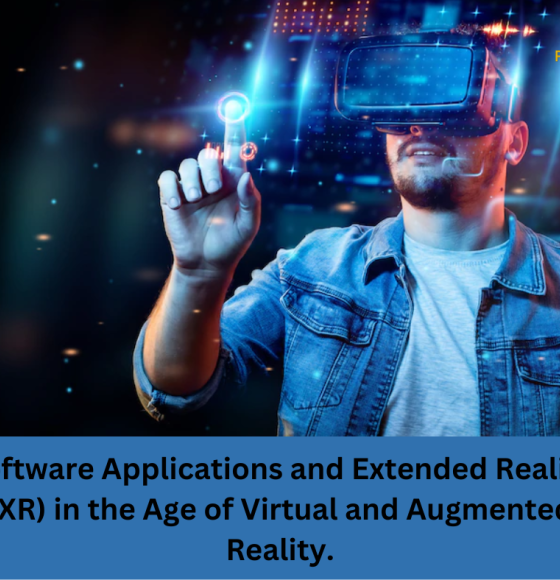Extended Reality (XR), which includes Virtual Reality (VR), Augmented Reality (AR), and Mixed Reality (MR), is a significant advancement into a new field of human-computer interaction. This ground-breaking fusion connects the physical and digital realms, resulting in immersive experiences that reimagine how we view and engage with information. From gaming and education to healthcare and industrial training, XR software applications are changing several industries.
We’ll explore Extended Reality in this material, looking at its various aspects and the various ways it’s changing the world.
Extended Reality (XR): What is it?
Virtual Reality (VR):
VR submerges people in a computer-generated or otherwise simulated environment. With the use of specialized tools like VR headsets, users may interact with this simulated environment as if it were real.
AR: Augmented Reality:
The real world is enhanced through augmented reality (AR). By adding more information or interactive features via gadgets like smartphones or AR glasses, it improves our sense of reality.
MR: Mixed Reality:
Both VR and AR elements are combined in MR. Real-time interaction between digital and physical objects is made possible by this. This immersive and participatory experience is made possible by MR headsets, such as Microsoft’s HoloLens.
The Effect of XR in Different Sectors:
Gaming:
With its unmatched immersion and involvement, XR has changed the gaming industry. Pokémon GO (AR) and Beat Saber (VR) are two games that demonstrate the possibilities of XR in gaming.
Instruction:
Education is becoming more dynamic and engaging because to XR, which improves learning experiences. In VR or AR, students can investigate historical events or dissect digital organisms.
Medical care:
Medical training, surgical planning, and therapy are all aided by XR. Surgeons can improve their abilities and decrease errors by practicing complicated procedures in a safe virtual environment.
XR Development: Tools and Platforms:
Unity3D:
Popular game production platform Unity3D is widely utilized for XR development. It is a preferred option for developers because it supports both VR and AR systems.
Unreal Engine:
Another strong platform for XR creation is Unreal Engine, which is renowned for its extensive toolkit and high-fidelity graphics.
ARCore and ARKit:
A basis for building engaging AR experiences is provided by the necessary toolkits ARKit (for iOS) and ARCore (for Android) for AR app development.
Future Trends and Things to Think About:
We predict developments like better technology, more purely natural user interfaces, and widespread use across industries as XR continues to develop. However, there are issues that require ongoing attention, such as assuring user safety, addressing privacy issues, and developing seamless interaction with the outside world.
Our environment is changing because to extended reality, which merges the real and virtual in previously unimaginable ways. XR is a technological frontier that promises an exciting future, changing everything from how we play, learn, and heal to how we perceive information.
Adopting XR as developers implies adopting innovation. It’s a chance to design experiences that push limitations and build a setting where the boundaries between reality and the digital world are hazy. Let’s enter this new era and influence the Extended Reality’s potential.

















